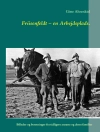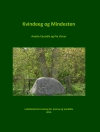This thought-provoking book is an exploration of the ways religion and diverse forms of mobility have shaped post-apartheid Johannesburg, South Africa. It analyses transnational and local migration in contemporary and historical perspective, along with movements of commodities, ideas, sounds and colours within the city. It re-theorizes urban ‘super-diversity’ as a plurality of religious, ethnic, national and racial groups but also as the diverse processes through which religion produces urban space. The authors argue that while religion facilitates movement, belonging and aspiration in the city, it is complicit in establishing new forms of enclosure, moral order and spatial and gendered control. Multi-authored and interdisciplinary, this edited collection deals with a wide variety of sites and religions, including Christianity, Islam, Hinduism and Judaism. Its original reading of post-apartheid Johannesburg advances global debates around religion, urbanization, migration and diversity, and will appeal to students and scholars working in these fields.
Daftar Isi
Chapter 1. Routes and Rites to the City: Introduction; Matthew Wilhelm-Solomon, Lorena Núñez Carrasco, Peter Kankonde Bukasa and Bettina Malcomess.- Chapter 2. Valleys of Salt in the House of God: religious re-territorialisation and urban space; Bettina Malcomess and Matthew Wilhelm-Solomon.- Chapter 3. Migration and the Sacred in Greater Rosettenville, Johannesburg; Peter Kankonde Bukasa and Lorena Núñez.- Chapter 4. “It’s only the glass door, which breaks every day.” Layered politics of (dis)order at the Central Methodist Mission; Elina Hankela.- Chapter 5. The Spirit of Hillbrow: Religion and the Ordering of Social Space in Inner City Johannesburg; Alex Wafer.- Chapter 6. Remaking Religion, Rethinking Space: How South Asian and Somali Migrants are Transforming Ethnically Bound Notions of Hinduism and Islam in Mayfair and Fordsburgh; Zaheera Jinnah and Pragna Rugunanan.- Chapter 7. Enchanted Suburbanism: Fantasy, Fear and Suburbia in Johannesburg; Obvious Katsaura.- Chapter 8. Eyes to See and Ears to Hear: Negotiating Religion in Alexandra Township; Becca Hartman-Pickerill.- Chapter 9. A man spoke in Joubert Park: The establishment of a transnational religious movement in South Africa; Bjørn Inge Sjødin.- Chapter 10. Angels and Ancestors: Prophetic Diversity and Mobility in the City; Matthew Wilhelm-Solomon, Melekias Zulu & Eric Worby.- Chapter 11. (Un)rest in peace: The (local) burial of foreign migrants as a contested process of place making; Khangelani Moyo, Lorena Núñez and Tsepang Leuta.- Chapter 12. Conclusion: Towards New Routes; Matthew Wilhelm-Solomon, Bettina Malcomess, Peter Kankonde Bukasa, and Lorena Núñez Carrasco.
Tentang Penulis
Matthew Wilhelm-Solomon is a researcher and writer at the African Centre for Migration and Society, University of the Witwatersrand Johannesburg, South Africa.
Lorena Núñez is Lecturer in Sociology at the University of the Witwatersrand Johannesburg, South Africa.
Peter Kankonde Bukasa is a doctoral researcher at the University of the Witwatersrand Johannesburg, South Africa, and the Max Planck Institute for the Study of Religious and Ethnic Diversity, Germany.
Bettina Malcomess is Lecturer in Fine Arts at the University of the Witwatersrand Johannesburg, South Africa. She is also an artist, writer and curator.












